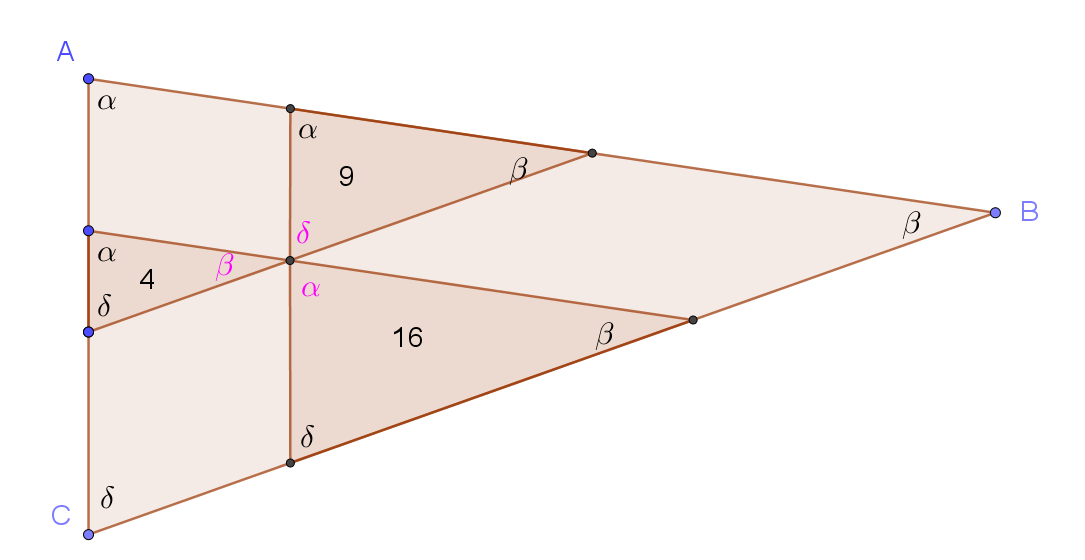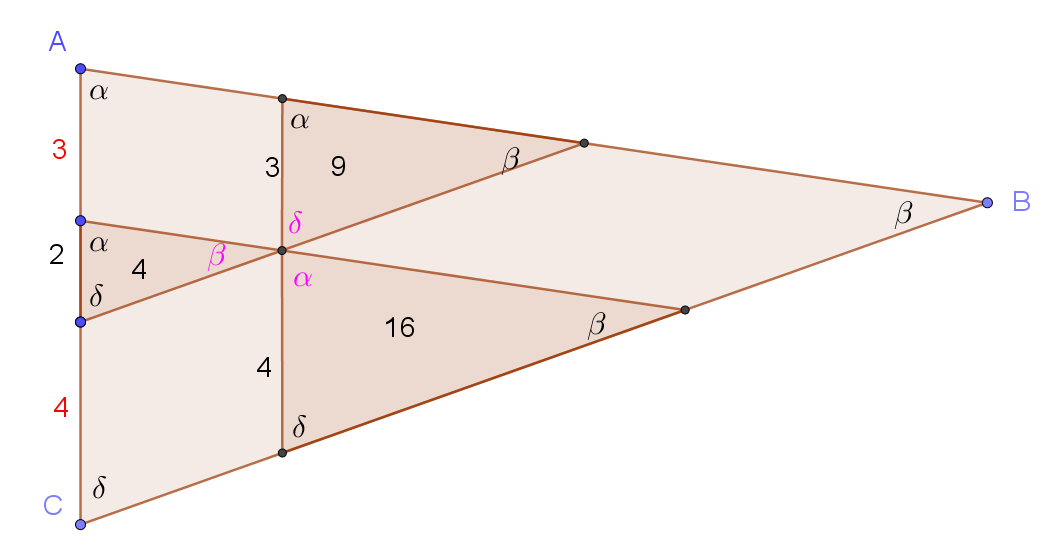Thanks Heureka and guest,
I think my logic is similar to guests but I did not really understand guest's that well.
Here is my diagram.
1) On my diagram I have labeled the angles of the triangle ABC
2) Then using only the fact that corresponding angles on parallel lines are congruent, I have labelled all the relevant angles in black.
3) Now, using the fact that the angle sum of a triangle is always the same (180 degrees but that does not matter) I have filled in the 3rd angle on all of the triangles - they are in pink.
4) Now it can be seen that there are 4 similar triangles. (3 equal angles test)
Also there are 3 parallelograms.

5) Now the ratio of the areas of the 3 small similar triangles is 4:9:16
6) so the ratio of corresponding sides of the 3 small similar triangles is 2:3:4
7) On the next diagram I will label 3 coresponding sides with their lengths (in black)
8) Then I will use the fact that parallelograms have opposite sides of equal length to fill in the missint length secions on AC (in red)

9) 3+2+4=9
10) So now I know that the ratio of the coresponding sides of the 4 similar triangles is 2:3:4:9
11) So the ratio of the areas of the 4 similar triangles is 4:9:16:81
Since the areas of the little ones are exactly 4,9 and 16, the area of the big one, i.e. triangle ABC is 81 units squared.